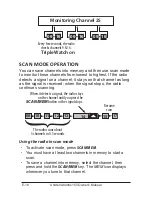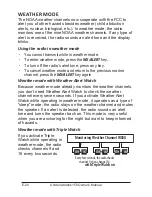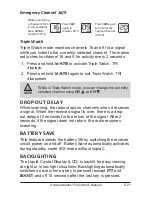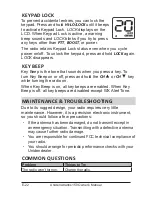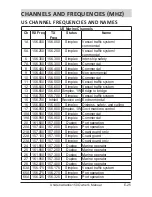
E-32
Uniden Atlantis 150 Owner’s Manual
BASIC RADIO GUIDELINES
You should familiarize yourself with the rules on marine radios and
be aware of which rules apply to your boat. Complete guidelines
for all ship and marine radio types can be found at the US Coast
Guard website under the topic Radio Info for Boaters (the direct link
is:
http://www.navcen.uscg.gov/marcomms/boater.htm
). Here are
a few guidelines that affect nearly all boaters:
x
If you have a VHF radio on your boat, you must maintain a watch
on channel 16 (156.800 MHz) whenever the radio is not being used
to communicate. Starting in 2004, if a radio is carried, it must be on
and set to channel 16 whenever your boat is underway.
x
If you hear a distress call, wait a few minutes to let a shore station
or Coast Guard vessel respond. If no other station has responded
after 5 minutes, you must respond to the distress call.
x
Do not make false mayday or distress calls as a prank or to test
your radio. (This is essentially like making a false 9-1-1 call; you
may be subject to fines.)
FCC/IC Information
x
Certification: FCC Part 15 or I.C. RSS
x
Output Power: 2.5W
x
Emission: 16K0F3E
x
Transmitter Frequency Range: 156.025-157.425 MHz
This device complies with Industry Canada licence-exempt RSS
standard(s). Operation is subject to the following two conditions: (1)
this device may not cause harmful interference, and (2) this device
must accept any interference received, including interference that
may cause undesired operation.
Unauthorized changes or modifications to this equipment may void
compliance with I.C. Rules. Any change or modification must be
approved in writing by Uniden.
Changes or modifications not approved by Uniden could void the
user’s authority to operate the equipment.

